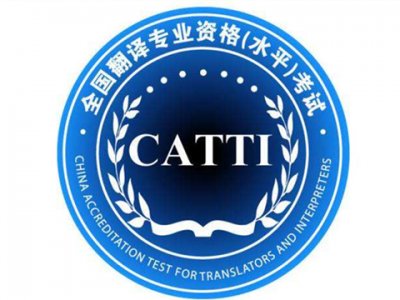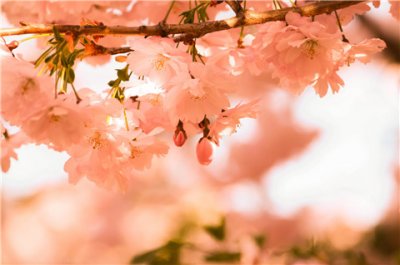2018年10月20日雅思考试预测(含口语新题解析)(2)
Questions 21-25
Complete the notes below.
Write NO MORE THAN THREE WORDS AND/OR A NUMBER for your answer.
Autumn term: Key dates
Term starts
15th September
Release timetables
15th September
Release 21 _____
14th October
All assignments online
by 22 _____
Release grades for first assignment
23 _____
Release 24 _____ for Belgium trip
29th October
Belgium trip
25 _____
Questions 26-30
Choose the correct letter, A, B or C.
26 The college is trying to
A significantly reduce the amount of paper it uses
B be careful about the amount of documents it produces.
C discover why students keep losing their work
27 According to the text, students at the college
A are not allowed to print documents.
B have restrictions on how many pages they can print.
C have to pay to do any printing.
28 The college
A has permission to reproduce the quizzes.
B wants the students to give them feedback about the quizzes.
C thinks the online quizzes are more effective than the paper ones.
29 The tutor explains that
A the quizzes are easy to find on the intranet.
B the quizzes will be online for a few weeks only.
C the majority of the quizzes are online.
30 The online quiz system
A occasionally doesnt work.
B keeps the quiz results confidential.
C allows tutors to identify areas where the students may be having difficulties
Section 4
Questions 31-40
Questions 31-34
31 _____ times are less common within the family
32 We may eat more than we need due to our _____
33 Eating habits can be affected by both _____ emotions.
34 People who are _____ are more likely to eat more due to negative emotions
Questions 35-39
Answer the questions below.
Which type of hunger relates to the points below?
Write E for emotional hunger. Write P for physical hunger.
35 Experiences a sudden urge to eat
36 Hungers for any type of food
37 Needs to satisfy the hunger as soon as possible
38 Will stop eating once full
39 Will feel no sense of guilt after eating
Questions 40
Choose the correct letter. A, B or C.
40 People suffering from obesity can be helped by
A taking the pressure off them about feeling guilty.
B understanding why they have negative feelings.
C pinpointing stressful moments that can cause emotional hunger
Answer key
Section 1
1 24 hours
2 snacks and laxis
3 debit card
4 2.30
5 5(.00)
6 anytime
7 1.30
8 A
9 A
10 B
Section 2
11 C
12 fulltime
13 1/3 off / one third off
4 holiday offers
15 £65
16&17 IN EITHER ORDER
B C
18 C
19 B
20 A
Section 3
21 (the) second assignment
22 24th November
23 17th November
24 (the) booking forms
25 19th November
26 A
27 B
28 A
29 C
30 C
Section 4
31 formal eating
32 emotional state
33 positive and negative
34 overweight
35 E
36 P
37 E
38 P
39 P
40 C
【阅读】
READING PASSAGE 1
You should spend about 20 minutes on Questions 1-13, which are based on Reading Passage 1 below.
A Wonder Plant
The wonder plant with an uncertain future: more than a billion people rely on bamboo for either their shelter or income, while many endangered species depend on it for their survival. Despite its apparent abundance, a new report says that species of bamboo may be under serious threat.
A Every year, during the rainy season, the mountain gorillas of Central Africa migrate to the foothills and lower slopes of the Virunga Mountains to graze on bamboo. For the 650 0r so that remain in the wild, it’s a vital food source. Although there are at almost 150 types of plant, as well as various insects and other invertebrates, bamboo accounts for up t0 90 percent of their diet at this time of year. Without it, says Ian Redmond, chairman of the Ape Alliance, their chances of survival would be reduced significantly. Gorillas aren’t the only locals keen on bamboo. For the people who live close to the Virungas, it’s a valuable and versatile raw material used for building houses and making household items such as mats and baskets. But in the past 100 years or so, resources have come under increasing pressure as populations have exploded and large areas of bamboo forest have been cleared to make way for farms and commercial plantations.
B Sadly, this isn’t an isolated story. All over the world, the ranges of many bamboo species appear to be shrinking, endangering the people and animals that depend upon them. But despite bamboo’s importance, we know surprisingly little about it. A recent report published by the UN Environment Programme (UNEP) and the Inter-national Network for Bamboo and Rattan (INBAR) has revealed just how profound is our ignorance of global bamboo resources, particularly in relation to conservation. There are almost 1,600 recognized species of bamboo, but the report concentrated on the l,200 or so woody varieties distinguished by the strong stems, or culms, that most people associate with this versatile plant. Of these, only 38 ‘priority species’ identified for their commercial value have been the subject of any real scientific research, and this has focused mostly on matters relating to their viability as a commodity. This problem isn’t confined to bamboo. Compared to the work carried out on animals, the science of assessing the conservation status of plants is still in its infancy. “People have only started looking hard at this during the past 10-15 years, and only now are they getting a handle on how to go about it systematically,” says Dr. Valerie Kapos, one of the report’s authors and a senior adviser in forest ecology and conservation to the UNEP.
C Bamboo is a type of grass. It comes in a wide variety of forms, ranging in heightfrom 30 centimeters to more than 40 meters. It is also the world’s fastest-growing woody plant; some species can grow more than a meterin a day. Bamboo’s ecological rote extends beyond providing food and habitat for animals. Bamboo tends to grow in stands made up of groups of individual plants that grow from root systems known as rhizomes. Its extensive rhizome systems, which tie in the top layers of the soil, are crucial in preventing soil erosion. And there is growing evidence that bamboo plays an important part in determining forest structure and dynamics. “Bamboo’s pattern of mass flowering and mass death leaves behind large areas of dry biomass that attract wildfire,” says Kapos. “When these burn, they create patches of open ground within the forest far bigger than would be left by a fallen tree.” Patchiness helps to preserve diversity because certain plant species do better during the early stages of regeneration when there are gaps in the canopy.
D However, bamboo’s most immediate significance lies in its economic value. Modern processing techniques mean that it can be used in a variety of ways, for example, as flooring and laminates. One of the fastest growing bamboo products is paper-25 percent of paper produced in India is made from bamboo fiber, and in Brazil, 100,000 hectares of bamboo are grown for its production. Of course, bamboo’s main function has always been in domestic applications, and as a locally traded commodity it’s worth about $4.5billion annually. Because of its versatility, flexibility and strength (its tensile strength compares to that of some steel), it has traditionally been used in construction. Today, more than one billion people worldwide live in bamboo houses. Bamboo is often the only readily available raw material for people in many developing countries, says Chris Stapleton, a research associate at the Royal Botanic Gardens. “Bamboo can be harvested from forest areas or grown quickly elsewhere, and then converted simply without expensive machinery or facilities,” he says. “In this way, it contributes substantially to poverty alleviation and wealth creation.”
E Given bamboo’s value in economic and ecological terms, the picture painted by the UNEP report is all the more worrying. But keen horticulturists will spot an apparent contradiction here. Those who’ve followed the recent vogue for cultivating exotic species in their gardens will point out that if it isn’t kept in check, bamboo can cause real problems. “In a lot of places, the people who live with bamboo don’t perceive it as being endangered in any way,” says Kapos. “In fact, a lot of bamboo species are actually very invasive if they’ve been introduced.” So why are so many species endangered? There are two separate issues here, says Ray Townsend, vice president of the British Bamboo Society and arboretum manager at the Royal Botanic Gardens. “Some plants are threatened because they can’t survive in the habitat-they aren’t strong enough or there aren’t enough of them, perhaps. But bamboo can take care of itself-it is strong enough to survive if left alone. What is under threat is its habitat.” It is the physical disturbance that is the threat to bamboo, says Kapos. “When forest goes, it is converted into something else: there isn’t anywhere for forest plants such as bamboo to grow if you create a cattle pasture.”
F Around the world, bamboo species are routinely protected as part of forest eco-systems in national parks and reserves, but there is next to nothing that protects bamboo in the wild for its own sake. However, some small steps are being taken to address this situation. The UNEP-INBAR report will help conservationists to establish effective measures aimed at protecting valuable wild bamboo species. Towns end, too, sees the UNEP report as an important step forward in promoting the cause of bamboo conservation. “Until now, bamboo has been perceived as a second-class plant. When you talk about places such as the Amazon, everyone always thinks about the hardwoods. Of course these are significant, but there is a tendency to overlook the plants they are associated with, which are often bamboo species. In many ways, it is the most important plant known to man. I can’t think of another plant that is used so much and is so commercially important in so many countries.” He believes that the most important first step is to get scientists into the field. “We need to go out there, look at these plants and see how they survive and then use that information to conserve them for the future.”
Questions 1-7
Reading Passage has six sections A-F.
Which section contains the following information?
Write the correct letter A-F in boxes 1-7 on your answer sheet
NB You may use any letter more than once
1. Comparison of bamboo with other plant species
2. Commercial products of bamboo
3. Limited extent of existing research
4. A human development that destroyed large areas of bamboo
5. How bamboos are put to a variety of uses
6. An explanation of how bamboo can help the survival of a range of plants
7. The methods used to study bamboo
Questions 8-11
Use the information in the passage to match the people (listed A-D) with opinions or deeds below.
Write the appropriate letters A-D in boxes 8-11 on your answer sheet.
NB you may use any letter more than once
A Ian Redmond
B Valerie Kapos
C Ray Townsend
D Chris Stapleton
8. Destroying bamboo jeopardizes to wildlife.
9. People have very confined knowledge of bamboo.
10. Some people do not think that bamboo is endangered.
11. Bamboo has loads of commercial potentials.
Questions 12-13
Answer the questions below using NO MORE THAN TWO WORDS from the passage for each answer.
Write your answers in boxes 12-13 on your answer sheet
12. What environmental problem does the unique root system of bamboo prevent?
13. Which bamboo product is experiencing market expansion?
READING PASSAGE 2
You should spend about 20 minutes on Questions 14-26, which are based on Reading Passage 2 below.
The Ant and the Mandarin
In 1476, the farmers of Berne in Switzerland decided there was only one way to rid their fields of the cutworms attacking their crops. They took the pests to court. The worms were tried, found guilty and excommunicated by the archbishop. In China, farmers had a more practical approach to pest control. Rather than relying on divine intervention, they put their faith in frogs, ducks and ants. Frogs and ducks were encouraged to snap up the pests in the paddies and the occasional plague of locusts. But the notion of biological control began with an ant. More specifically, it started with the predatory yellow citrus ant Oeco-phylla smaragdina, which has been polishing off pests in the orange groves of southern China for at least 1,700 years. The yellow citrus ant is a type of weaver ant, which binds leaves and twigs with silk to form a neat, tent-like nest. In the beginning, farmers made do with the odd ants nests here and there. But it wasnt long before growing demand led to the development of a thriving trade in nests and a new type of agriculture - ant farming.
For an insect that bites, the yellow citrus ant is remarkably popular. Even by ant standards, Oecophylla smaragdina is a fearsome predator. Its big, runs fast and has a powerful nip - painful to humans but lethal to many of the insects that plague the orange groves of Guangdong and Guangxi in southern China. And for at least 17 centuries, Chinese orange growers have harnessed these six-legged killing machines to keep their fruit groves healthy and productive.
Citrus fruits evolved in the Far East and the Chinese discovered the delights of their flesh early on. As the ancestral home of oranges, lemons and pomelos, China also has the greatest diversity of citrus pests. And the trees that produce the sweetest fruits, the mandarins - or kan - attract a host of plant-eating insects, from black ants and sap-sucking mealy bugs to leaf-devouring caterpillars. With so many enemies, fruit growers clearly had to have some way of protecting their orchards.
The West did not discover the Chinese orange growers secret weapon until 1 the early 20th century. At the time, Florida was suffering an epidemic of citrus canker and in 1915 Walter Swingle, a plant physiologist working for the US Department of Agriculture, was sent to China in search of varieties of orange that were resistant to the disease. Swingle spent some time studying the citrus orchards around Guangzhou, and there he came across the story of the cultivated ant. These ants, he was told, were grown by the people of a small village nearby who sold them to the orange growers by the nestful.
The earliest report of citrus ants at work among the orange trees appeared in a book on tropical and subtropical botany written by Hsi Han in AD 304. The people of Chiao-Chih sell in their markets ants in bags of rush matting. The nests are like silk. The bags are all attached to twigs and leaves which, with the ants inside the nests, are for sale. The ants are reddish-yellow in colour, bigger than ordinary ants. In the south, if the kan trees do not have this kind of ant, the fruits will all be damaged by many harmful insects, and not a single fruit will be perfect.
Initially, farmers relied on nests which they collected from the wild or bought in the market where trade in nests was brisk. It is said that in the south orange trees which are free of ants will have wormy fruits. Therefore, people race to buy nests for their orange trees, wrote Liu Hsun in Strange Things Noted in the South in about 890.
The business quickly became more sophisticated. From the 10th century, country people began to trap ants in artificial nests baited with fat. Fruit-growing families buy these ants from vendors who make a business of collecting and selling such creatures, wrote Chuang Chi-Yu in 1130. They trap them by filling hogs or sheeps bladders with fat and placing them with the cavities open next to the ants nests. They wait until the ants have migrated into the bladders and take them away. This is known as rearing orange ants. Farmers attached k the bladders to their trees, and in time the ants spread to other trees and built new nests.
By the 17th century, growers were building bamboo walkways between their trees to speed the colonisation of their orchards. The ants ran along these narrow bridges from one tree to another and established nests by the hundreds of thousands”.
Did it work? The orange growers clearly thought so. One authority, Chhii Ta-Chun, writing in 1700, stressed how important it was to keep the fruit trees free of insect pests, especially caterpillars. It is essential to eliminate them so that the trees are not injured. But hand labour is not nearly as efficient as ant power...
Swingle was just as impressed. Yet despite his reports, many Western biologists were skeptical. In the West, the idea of using one insect to destroy another was new and highly controversial. The first breakthrough had come in 1888, when the infant orange industry in California had been saved from extinction by the Australian vedalia beetle. This beetle was the only thing that had made any in- T roads into the explosion of cottony cushion scale that was threatening to destroy the states citrus crops. But, as Swingle now knew, Californias first was nothing of the sort. The Chinese had been expert in biocontrol for many centuries.
The long tradition of ants in the Chinese orchards only began to waver in the 1950s and 1960s with the introduction of powerful organic insecticides. Although most fruit growers switched to chemicals, a few hung onto their ants. Those who abandoned ants in favour of chemicals quickly became disillusioned. As costs soared and pests began to develop resistance to the chemicals, growers began to revive the old ant patrols in the late 1960s. They had good reason to have faith in their insect workforce.
Research in the early 1960s showed that as long as there were enough ants in the trees, they did an excellent job of dispatching some pests - mainly the larger insects - and had modest success against others. Trees with yellow ants produced almost 20 per cent more healthy leaves than those without. More recent trials have shown that these trees yield just as big a crop as those protected by expensive chemical sprays.
One apparent drawback of using ants - and one of the main reasons for the early skepticism by Western scientists - was that citrus ants do nothing to control mealy bugs, waxy-coated scale insects which can do considerable damage to fruit trees. In fact, the ants protect mealy bugs in exchange for the sweet honey-dew they secrete. The orange growers always denied this was a problem but Western scientists thought they knew better.
Research in the 1980s suggests that the growers were right all along. Where X mealy bugs proliferate under the ants protection, they are usually heavily parasitised and this limits the harm they can do.
Orange growers who rely on carnivorous ants rather than poisonous chemicals maintain a better balance of species in their orchards. While the ants deal with the bigger insect pests, other predatory species keep down the numbers of smaller pests such as scale insects and aphids. In the long run, ants do a lot less damage than chemicals - and theyre certainly more effective than excommunication.
Questions 14-18
Look at the following events (Questions 14-18) and the list of dates below.
Match each event with the correct time A-G.
Write the correct letter A-G in boxes 14-18 on your answer sheet.
14. The first description of citrus ants is traded in the marketplace.
15. Swingle came to Asia for research.
16. The first record of one insect is used to tackle other insects in the western world.
17. Chinese fruit growers started to use pesticides in place of citrus ants.
18. Some Chinese farmers returned to the traditional bio-method
List of Dates
A 1888
B AD 890
C AD 304
D 1950s
E 1960s
F 1915
G 1130
Questions 19-26
Do the following statements agree with the information given in Reading Passage?
In boxes 19-26 on your answer sheet write
TRUE if the statement agrees with the information
FALSE if the statement contradicts the information
NOT GIVEN if there is no information on this
19. China has more citrus pests than any other country in the world.
20. Swingle came to China to search for an insect to bring back to the US.
21. Many people were very impressed by Swingles discovery.





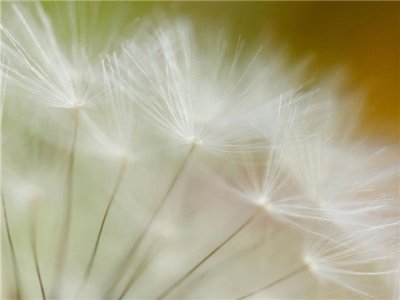 CATTI考试英语二级笔
CATTI考试英语二级笔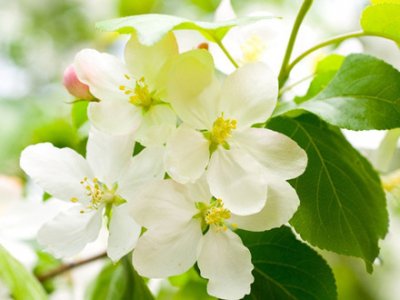 【真题精析】2016年12
【真题精析】2016年12 备考六级:30天背完六
备考六级:30天背完六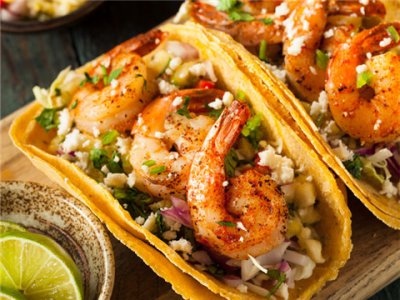 2017年4月英语专业4级
2017年4月英语专业4级 2017年12月英语六级翻
2017年12月英语六级翻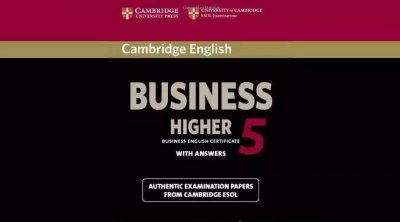 大神分享:我是如何拿
大神分享:我是如何拿 大学英语四级冲刺模拟
大学英语四级冲刺模拟 2016改革后专八真题:
2016改革后专八真题: 2016改革后专八真题:
2016改革后专八真题: 2017年5月六级口语考
2017年5月六级口语考 2017年上半年CATTI二
2017年上半年CATTI二 CATTI考试常见问题解
CATTI考试常见问题解 2017年12月四级写作预
2017年12月四级写作预 2017专四词汇必备:高
2017专四词汇必备:高 四六级阅读:2017年12
四六级阅读:2017年12 这样预读选项,你的听
这样预读选项,你的听